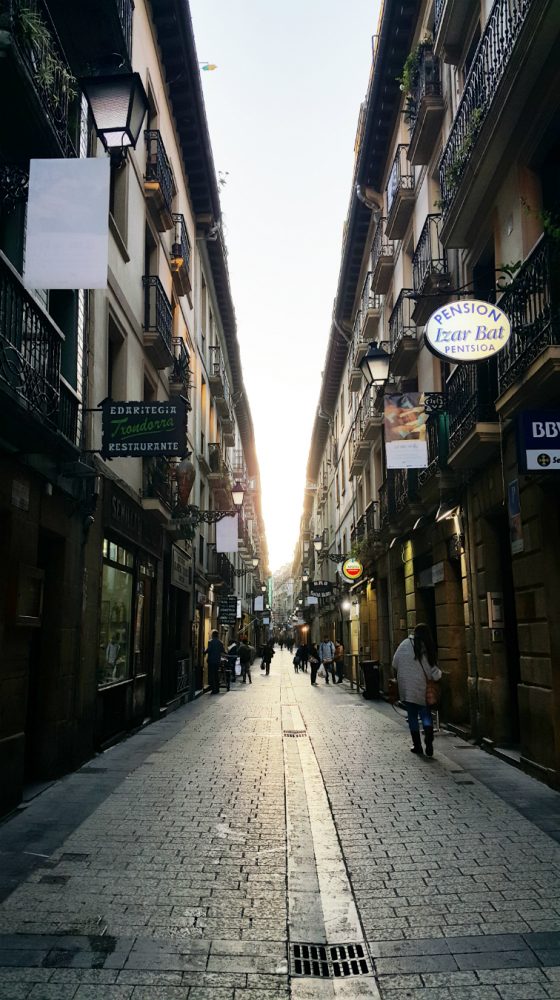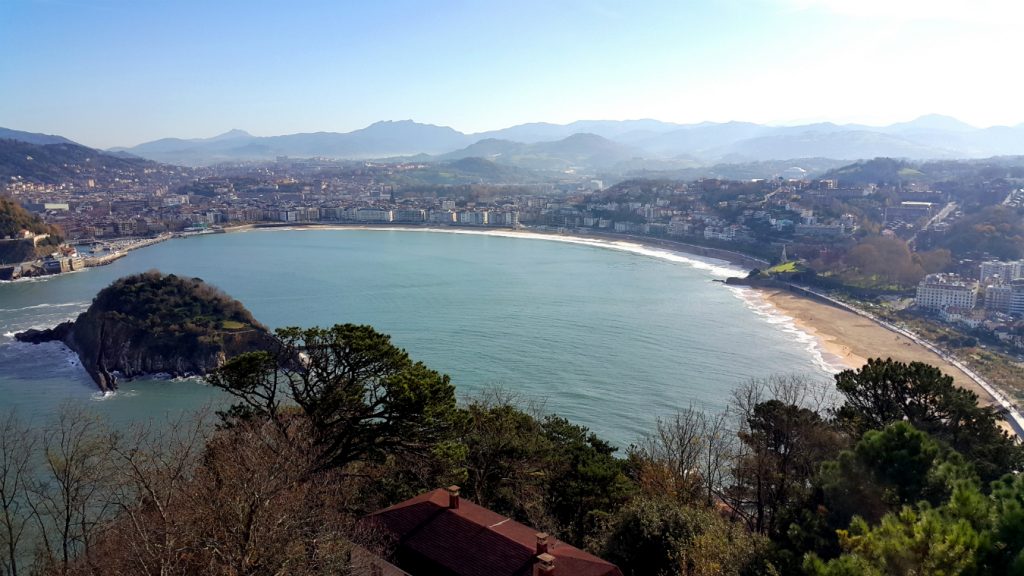For a city with a population of less than 200,000 residents, Spain’s San Sebastián ranks remarkably high in culinary prestige per capita. In its 2016 guide, Michelin awarded three stars to only eight restaurants in all of Spain, and three of them—Arzak, Akelarre, and Martín Berasategui—are located in and around San Sebastián. A fourth, Mugaritz, just outside the city, earned two stars and was ranked number six on the World’s 50 Best Restaurants list in 2015. There are also five more one-star establishments within the city and its outskirts, making it clear that Michelin inspectors are big fans of New Basque cuisine.
San Sebastián became a resort destination in the late 19th century when it was a favoured vacationing spot for Spanish royalty. The city enjoyed its golden age around the turn of the century; the Belle Epoque-style buildings and public spaces along the promenade of La Concha Beach are vestiges of this time. Today, San Sebastián is a major hub for Basque culture. Visitors come for the annual film festival in August, for the historic Old Town, and for the pretty, crescent-shaped beach and its surrounding scenery. But most of all, they come for the food.
The city’s finest restaurants are a product of the Basque Country’s passion for cooking and its rich culinary traditions, which includes gastronomy clubs: establishments where members can prepare meals for friends and family and break bread in a warm, restaurant-like setting. Akelarre chef Pedro Subijana, who along with Juan Mari Arzak is known as one of the fathers of New Basque cuisine, says these clubs were born after the city was completely destroyed by the British in 1813. When residents got together to discuss how they would rebuild, they also cooked and ate together—and so, a tradition was born.
The gastronomy clubs are some of the city’s most important cultural institutions. During the Feast of San Sebastián, a 24-hour party that takes over the city each year in January, club members dress as chefs and march through the streets playing small drums. Even Subijana, Arzak, Martín Berasategui, and Andoni Luis Aduriz (of Mugaritz) are members of gastronomy clubs, and these global culinary superstars sometimes get together informally to cook together and share a meal, just like everyone else in San Sebastián. “We are honorary members of some clubs, and of course I love to go and see what they do,” says Subijana.
San Sebastián is currently one of two European Capitals of Culture (ECOC) for 2016. Events are planned for throughout the year, including concerts, music festivals, theatre performances, art exhibitions, and, of course, culinary initiatives. One of the main purposes of the year-long event is to use the ECOC as a means to heal and reflect upon the Basque Conflict, a decades-long war between separatists and government forces that saw terrorist bombings and assassinations carried out in San Sebastián and elsewhere in Spain. “We believe culture can be a tool to overcome this conflict, and we can develop a stronger society,” says Pablo Berastegui, general director of San Sebastián/Donostia 2016. “Artists who come from different backgrounds or different countries can come together and create something beautiful. We want to promote the idea of people creating something new with people who may think differently than they do.” One such event is On Appetit, which will see chefs from throughout Europe paired together with a chef from San Sebastián in order to collaborate and learn from one another.
Pedro Subijana’s contribution to the ECOC was the event’s signature pintxo, the Melina Mercouri. Pintxos are the Basque version of tapas, small two-or-three bite dishes served at bars and pubs. No trip to San Sebastián is complete without a pintxos tour through the Old Town until late in the evening. Most pintxos purveyors cover their countertops with platters of food, and guests are free to help themselves. Many types of pintxos consist of a piece of bread with a variety of topping, including Iberico ham, cheese, deviled eggs, Russian salad, shrimp, local anchovies, and other smoked fish. Other typical pintxos include béchamel croquettes, Spanish omelettes, and the Gilda (green olives, pickled peppers, and an anchovy in oil on a stick, eaten in one bite, named for the Rita Hayworth film); the Melina Mercouri is a version of the Gilda that substitutes green olives for Kalamata and adds a cheese cream made with feta. And San Sebastián’s chefs are nothing if not creative. For more sophisticated takes on pintxos, try the roasted quail at A Fuego Negro or the foie gras and short rib dishes at La Cuchara San Telmo.
Many of the villages on the outskirts of the city are known for their apple orchards and cider houses. Here, guests can help themselves to apple cider (about five or six per cent alcohol) straight from the barrels. The typical blue-collar set menu feast includes a cod fish omelette, a roasted cod filet, and a very large T-bone steak, as well as apple jelly, cheese, and walnuts for dessert, along with all the cider one cares to drink.
San Sebastián’s global reputation may come from its finest restaurants, but visitors will discover that the Basque passion for cooking is evident in nearly all the city’s bars, eateries, and cider houses, no matter the number of stars.
_______
Keep up the wanderlust with more Travel stories.











